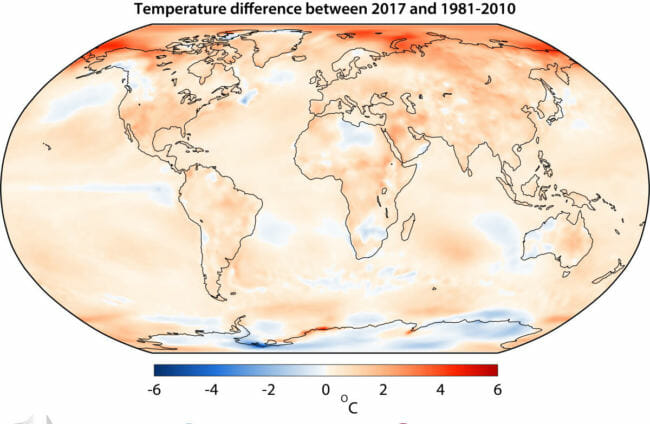
The Arctic is warming twice as fast as the rest of the planet.
Listener Drew Grant, from Juneau, sent an email recently to our Ask a Climatologist segment wondering why the Arctic is warming so much faster.
Brettschneider says it’s a phenomenon called polar amplification.
Interview Transcript:
Brian: We get a limited amount of solar energy. But normally when we’re snow covered, that snow and ice acts as a mirror, so when the sun’s rays come in, if there’s snow on the ground, most of it is reflected back into space, so it’s like it never occurred. However, if you melt that snow, if you warm the globe, say one degree, you’re going to melt that snow a little bit sooner, and turn some of those snow events into rain events. So when you have solar energy in November, February, March, April and there’s no snow on the ground now, that ground can now absorb the solar energy. You create a feedback where you’re absorbing more energy, you’re warming up the air around it which melts more snow, which warms up the air even more. So areas that experience this snow cover variability, they’re going to warm up faster than areas in southerly latitudes that don’t get snow.
Annie: Sea ice plays a big role here as well.
Brian: Sea ice is actually the major input in this equation. So normally in the middle of the summer, when you have 24 hours of daylight, the Arctic ocean has been covered in ice, so 24 hours a day, most of the Arctic ocean was acting like a big mirror, reflecting solar energy back into space, like it never occurred. Now in the summer about half the Arctic ocean is open water and open water is very efficient at storing solar energy. So now for 24 hours a day, six months out of the year, you have half the Arctic ocean absorbing warmth from the sun. And it releases that very slowly, but very consistently. And it warms up the entire area surrounding the Arctic.
Annie: And then we have a scenario like this year where even off the coast of Utqiagvik and Kaktovik, not much sea ice, right?
Brian: Exactly. It’s another feedback cycle. So you warm up the Arctic ocean you make it harder for new sea ice to form, which then makes it more open water that can absorb more heat which can warm the water even more which can make it even harder to form more sea ice and so on. So it’s a vicious cycle. Communities right next to the open water feel this direct effect, because they’re right next to this tremendous heat source, but it’s more than just those direct effects, it’s a global effect because this warmth from the air gets released and fills up the entirety of the air surrounding the ocean. So there are direct effects, which we feel here in Alaska, but then there’s this Arctic wide effect as well.
